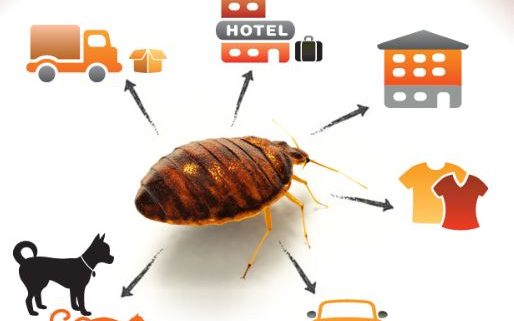Comprehensive Kings Pest Control Services Cincinnati OH
Kinds of Bug Control: Which Method Is Right for Your Invasion?
When faced with an insect infestation, the option of an ideal approach for pest control is crucial in effectively taking care of the scenario. By exploring the various types of insect control techniques available, people can make educated choices tailored to their unique circumstances, making sure an extra effective and sustainable outcome in insect removal.
Chemical Insect Control
Chemical parasite control involves using synthetic or naturally acquired chemicals to manage and eliminate pest populations efficiently. This method is frequently utilized in farming, forestry, and property setups to deal with a large range of pests, consisting of weeds, rats, and pests. The usage of chemical pesticides can give quick and targeted solutions to pest infestations, making it a preferred choice for numerous individuals and organizations.
One of the essential advantages of chemical parasite control is its capacity to promptly remove parasites, minimizing the threat of damages to plants, residential property, and human health. By using details chemicals that target certain pests, this technique can properly control problems while decreasing injury to advantageous organisms and the setting when used correctly.
However, making use of chemical parasite control likewise raises issues about possible unfavorable effects on non-target types, water resources, and human health. It is critical to follow safety and security guidelines, apply chemicals sensibly, and consider different insect control methods to decrease these threats and make certain lasting bug monitoring methods.
Organic Parasite Control
Organic pest control, additionally referred to as biocontrol, uses living microorganisms to reduce and handle insect populaces naturally. This method takes advantage of the power of nature to control pests without the need for synthetic chemicals. Biocontrol can entail the intro of natural adversaries of the parasite types, such as microorganisms, predators, or bloodsuckers, to subdue insect populaces. By utilizing the insect's natural predators or pathogens, organic insect control provides a eco-friendly and lasting service to pest management.

Mechanical Insect Control
Making use of hand-operated and physical approaches to handle bug populations, mechanical parasite control uses a different approach that does not count on using living organisms or artificial chemicals. This approach includes using barriers, traps, or various other tools to physically deter or remove insects. By obstructing insect access factors or establishing up traps to capture them, mechanical pest control can effectively lower invasions without introducing chemicals into the atmosphere.
One usual instance of mechanical pest control is making use of mesh displays on doors and windows to stop pests from getting in structures. This basic yet reliable method serves as a physical obstacle, maintaining bugs out while enabling for appropriate ventilation. Furthermore, tools like mousetraps, fly swatters, and ultrasonic repellents fall under the mechanical parasite control classification.
While mechanical insect control approaches can be labor-intensive and require regular surveillance and maintenance, they use a ecologically friendly and sustainable solution for handling parasite invasions. By combining various mechanical strategies, building proprietors can produce a comprehensive insect control approach that reduces dependence on chemical pesticides.
Physical Pest Control

Some typical physical pest control techniques include using obstacles such as screens or internet to avoid parasite entry, catches to capture and remove insects, and hand-picking to literally remove pests from plants or structures. In addition, methods like warmth therapies can be made use of to control bugs like bed insects by raising the temperature level to levels that are dangerous to the pests.
Physical bug control is especially beneficial in integrated parasite administration (IPM) methods, where several parasite control approaches are combined for effective bug administration while decreasing using chemicals. By making use of physical parasite control techniques, individuals can efficiently resolve pest invasions with very little ecological impact.
Integrated Pest Administration
When executing physical parasite control methods as part of pest management techniques, Integrated Insect Administration (IPM) emerges as an extensive technique that leverages numerous strategies to properly control pest populaces. IPM concentrates on long-lasting prevention of insects through a mix of organic, social, physical, and house and pest inspection chemical devices customized to particular insect problems. By incorporating several control methods, IPM aims to lessen the risks associated with parasites while additionally lowering reliance on chemical services.
One key aspect of IPM is the focus on tracking and examining pest populations to determine the most ideal control methods. This aggressive method permits for very early intervention and targeted approaches, resulting in extra effective pest management. In addition, IPM advertises eco-friendly techniques by prioritizing non-chemical control methods and only making use of pesticides as a last option.
Final Thought

By making use of the bug's what do pest control do all-natural killers or microorganisms, organic insect control supplies a lasting and eco pleasant solution to pest administration. - Kings cincinnati pest control
Making use of manual and physical techniques to handle insect populaces, mechanical pest control provides an alternative approach that does not rely on the usage of living organisms or synthetic chemicals.An efficient technique to taking care of pest populaces without counting on chemical or biological techniques entails the usage of physical bug control techniques.When executing physical pest control approaches as component of insect administration methods, Integrated Pest Monitoring (IPM) emerges as a thorough strategy that leverages different strategies to effectively regulate pest pest and pest management populations. Chemical insect control entails the usage of pesticides, organic parasite control utilizes all-natural predators, mechanical pest control involves physical barriers, physical pest control consists of trapping or removing parasites, and incorporated bug monitoring incorporates several approaches for an all natural strategy to pest control.